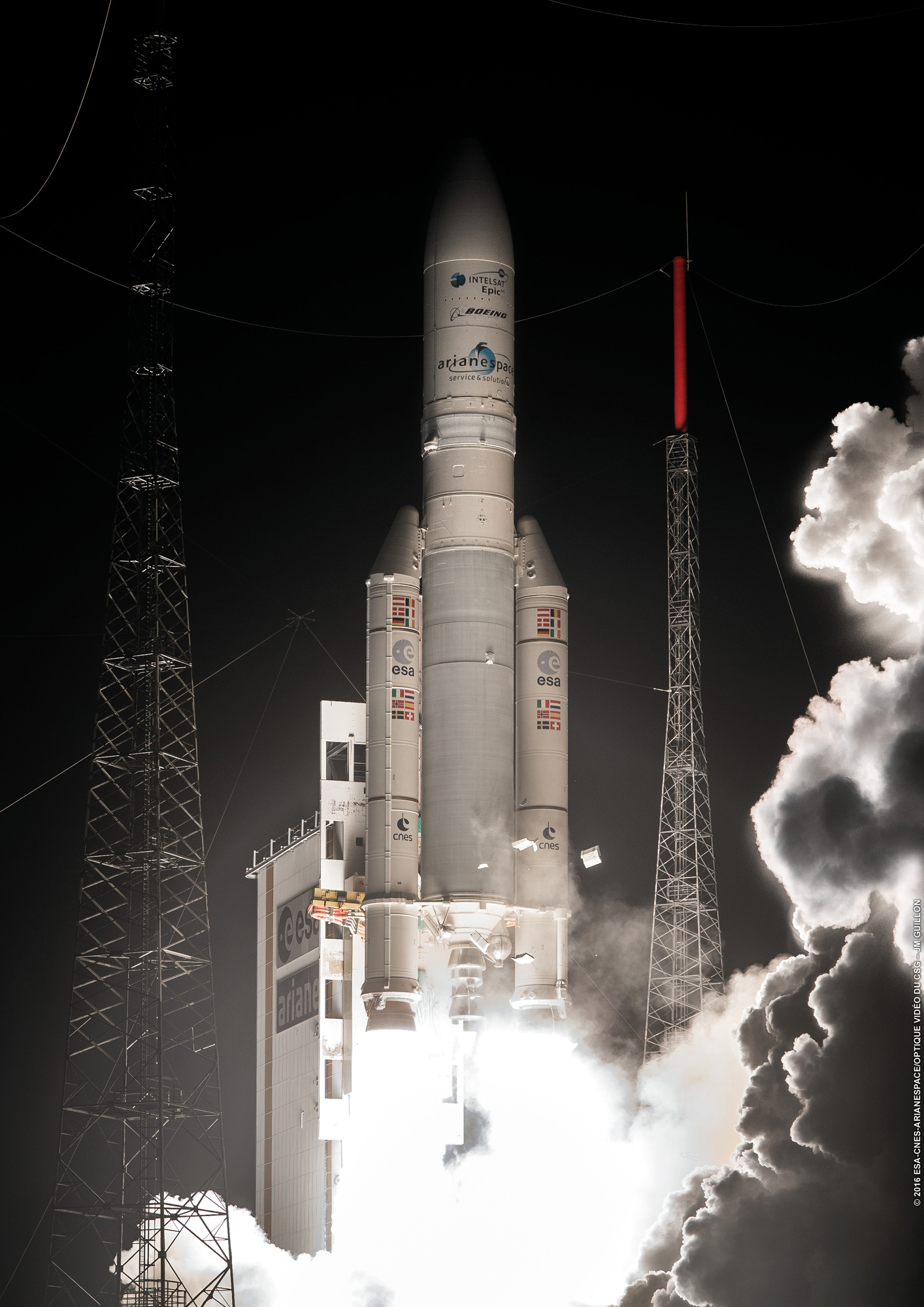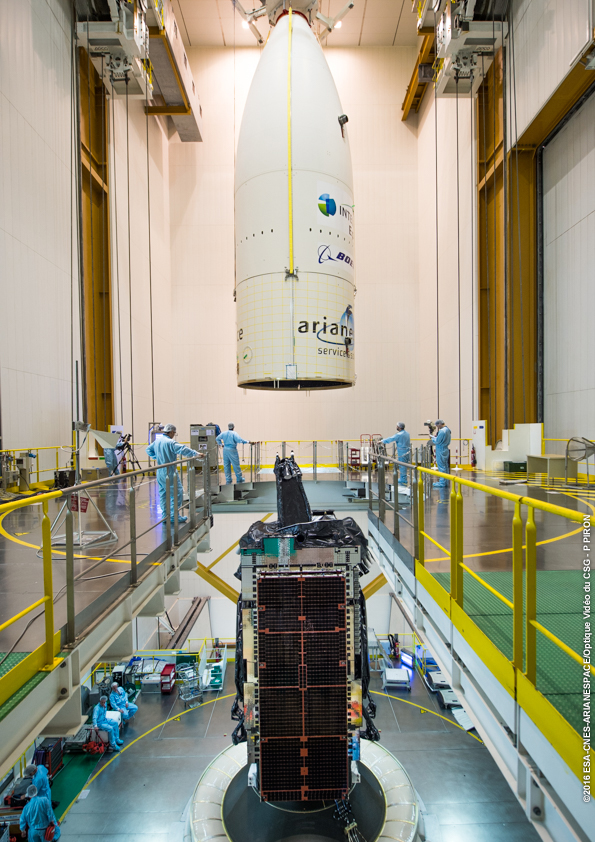Ariane 5 Places 1st Intelsat Epic High-Throughput Satellite into Orbit

KOUROU, French Guiana — Europe's Ariane 5 heavy-lift rocket on Jan. 27 successfully placed the first of Intelsat's Epic-generation satellites into transfer orbit, a launch so important for Intelsat that the fleet operator was willing to forgo a co-passenger to secure the earliest possible launch slot.
U.S.- and Luxembourg-based Intelsat is counting on the Epic Ku-band high-throughput satellites to drive revenue growth as its spacecraft appeal to new markets for mobile broadband.
Operating from Europe's Guiana Space Center here on the northeast coast of South America, the Ariane 5 rocket placed Intelsat 29e into the targeted transfer orbit. Intelsat said the satellite was healthy and sending signals.
It was the rocket's 70th consecutive launch success and the first of a planned seven — and maybe eight — Ariane 5 launches scheduled for this year.
In addition to 29e, Intelsat has five other Epic-class satellites under construction at Boeing Space and Intelligence Systems of El Segundo, California, all using Boeing's sixth generation of digital signal processors. The processors will allow Intelsat to move coverage and power around the satellite's coverage area to follow demand.
With largely flat revenue growth and a debt load whose service costs Intelsat the equivalent to buying three new satellites a year, Intelsat views the Boeing-built Epic line as a ticket to fast-growing aeronautical and maritime markets.
The company is positioning Epic as a backwards-compatible, user-friendly, open-architecture alternative to the Ka-band high-throughput fleets now being deployed by several of its competitors.
Breaking space news, the latest updates on rocket launches, skywatching events and more!
The Ariane 5, capable of placing two satellites weighing a combined 10,000 kilograms into geostationary transfer orbit, launched the 6,552-kilogram Intelsat 29e as a solo passenger.
Evry, France-based commercial launch operator Arianespace has long based its Ariane rocket business model on carrying two telecommunications satellites at a time into the same transfer orbit.
Without a co-passenger to share the launch cost, Intelsat paid more than the usual rate it would have paid for the upper berth in the Ariane 5. But because the January launch also allowed Evry, France-based Arianespace to smooth out its 2016 launch manifest and to be within reach of eight Ariane 5 campaigns this year, the additional cost to Intelsat was less than it might have been.
Arianespace Chief Executive Stephane Israel said before the launch that the flight was the first January liftoff of Ariane 5 since 2002. "It's a good sign for the rest of the year," Israel said. Paris-based Eutelsat, for the same reasons as Intelsat, will fly its 65 West A satellite as a solo Ariane 5 passenger, with the launch scheduled for early March.
Intelsat 29e carries 20 C-band transponders and, when measured in 36-megahertz equivalents, 249 Ku-band transponders. Excepting Thaicom's IPStar satellite launched 20 years ago, it will be the first of the new-generation high-throughput satellites using Ku-band. The satellite also carries 450 megahertz of Ka-band.
Its total throughput is 25 gigabits per second, which Intelsat Chief Technology Officer Thierry Guillemin said is an optimal size balancing the need for power with the need to avoid interference between adjacent spot beams operating in the same frequency.
Addressing a briefing here before the launch, Guillemin clearly laid out the importance of the Epic series for Intelsat.
"This is not just any space project," Guillemin said. "In the 16 years I have been at Intelsat, this is the most important for us. This is the beginning of an entirely new generation of satellites and a new era of connectivity for this industry. We are at the beginning of a renaissance in satellite communications."
Each Epic satellite carries the capacity of 10 conventional Intelsat satellites. Guillemin said the six Epic satellites ordered from Boeing would have the effect of doubling Intelsat’s fleet capacity. The company operates 50 satellites.
Intelsat 29e will operate from 310 degrees east in geostationary orbit, covering the continental United States, Latin America and a special focus on the North Atlantic sea and air routes for Intelsat's mobility customers, including Panasonic Avionics, Harris CapRock and maritime broadband provider MTN Communications, which was recently purchased by EMC of Miami.
This story was provided by Space News, dedicated to covering all aspects of the space industry.
Peter B. de Selding is the co-founder and chief editor of SpaceIntelReport.com, a website dedicated to the latest space industry news and developments that launched in 2017. Prior to founding SpaceIntelReport, Peter spent 26 years as the Paris bureau chief for SpaceNews, an industry publication. At SpaceNews, Peter covered the commercial satellite, launch and international space market. He continues that work at SpaceIntelReport. You can follow Peter's latest project on Twitter at @pbdes.



